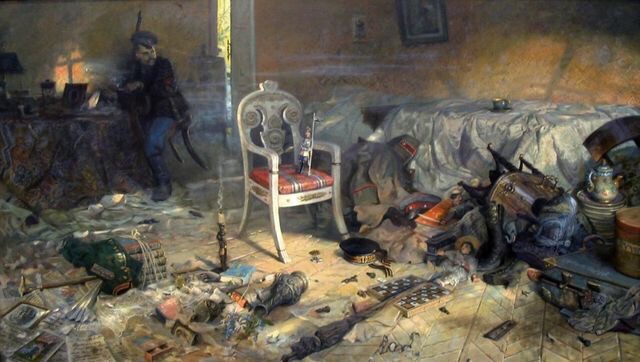Fabergé Egg created by the Russian jewelery House Fabergé named “The pearl Egg”, gold frame of a portrait of the Tsar Nicholas II and the Empress Alexandra by the House Fabergé and photo of Saint Petersbourg during winter.
“The Pearl egg” is inlaid with 139 fine pearls and 3300 diamonds and other precious gemstones. It has been the first Egg wrought for 99 years by the Fabergé House. It was revealed during an auction in Doha, Qatar. In 2007, the Fabergé House revived, 90 years after its disappearance in 1917. The name of Fabergé is redeemed under the blessing of Tatiana Fabergé (Great grand-daughter of Peter Carl Fabergé). The French jeweler Frédéric Zaavy is in charge of the creation. The brand innovates (watches, new designs…) but also perpetuates the art of Peter Carl Fabergé (Imperial collection, Easter eggs under different forms).


The Russian jewelry House Fabergé was founded by Gustav Fabergé (1814-1893). His son, Peter Carl Fabergé (1846-1920) is the famous Russian jeweler who created the famous Fabergé Eggs (Easter eggs were made as gifts for the Tsars Alexander III and Nicholas II’s wives and mothers). He is considered as the jeweler of the Russian Tsars (Alexander III and Nicholas II. The Fabergé house closed in 1917, during the Russian revolution.
The Imperial Romanov dynasty ruled Russia from 1613 to 1917. Michael Romanov became Tsar of Russia on the February 21th 1613 and reigned until 1645.
The Tsar Nicholas II (1868-1918) is the last Russian Tsar (Romanov family) ; he ruled Russia from 1894 to 1917. Nicholas II (Nikolay Aleksandrovich) is the son of Alexander III (1845-1894) and Maria Feodorovna (1847-1928) born as Princess Dagmar of Denmark. His wife is the Empress Alexandra Feodorovna Romanova (1872-1918), born as Alix of Hesse-Darmstadt.
Tsar Nicholas II and Tsarina Alexandra had six children : Olga, Tatiana, Maria, Anastasia Nikolaevna and Alexei Nikolaevich.
Unfortunately, her son Alexei suffered of Hemophilia. Worried, Tsarina Alexandra asked the sulfurous Grigory Rasputin (infamous “Holy man”) to heal him. After succeeding to heal him, Grigory Rasputin (1872-1916) became a mystic figure at the court. His influence grew to the point of leading policy. He was murdered by a court conspirators in 1916.
The Emperor Nicholas II and his family (wife and children) were murdered in the night of 16 July 1918 and 17 July 1918 by the Bolsheviks under the orders of Lenine. The murder took place in the Villa Ipatiev in Ekaterinburg.
Two years later, a rumour said that the daughter : the Grand Duchess Anastasia Nikolaevna of Russia (1901-1918) escaped from the massacre. In 1920, a woman claimed to be the Grand Duchess Anastasia. Neither the Anastasia’s mother Alexandra Feodorovna nor the Anastasia’s aunt Irene of Prussia recognized this woman. This woman was an usurper, in reality she was named Franziska Schanzkowska. She was known famously as Anna Anderson. Other women pretended to be Anastasia.
The Anastasia’s fate and mystery inspired cinema (movie directed by Anatole Litvak in 1956 starring Ingrid Bergman and Yul Brynner and Disney movie of 1997.
The House of Romanov was the Russian Dynasty who reigned from 1613 to 1917. The Romanov family is also famous for its tragic fate.
For two centuries, Saint Petersburg had been the Imperial capital of Russia. The city was founded in 1703 by the Russian Emperor Peter the Great. It is now considered as a cultural capital. There are more than 250 museums.
Like this:
Like Loading...




















